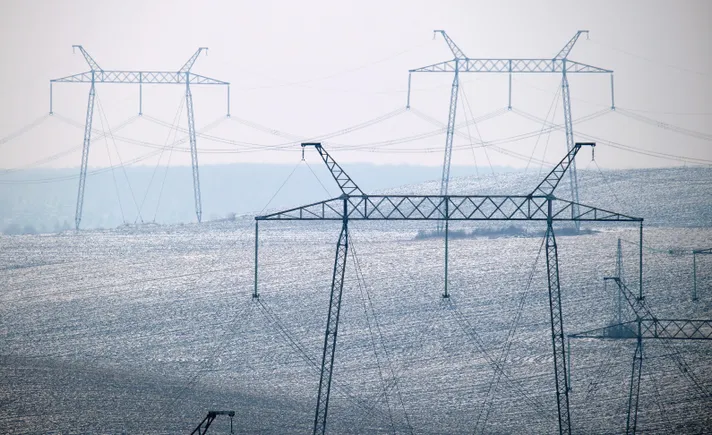
North America added five rigs week on week, according to Baker Hughes’ latest North America rotary rig count, which was released on May 16.
Although the U.S. dropped a total of two rigs week on week, Canada added a total of seven rigs during the same period, taking the total North America rig count up to 697, comprising 576 rigs from the U.S. and 121 from Canada, the count outlined.
Of the total U.S. rig count of 576, 563 rigs are categorized as land rigs, 11 are categorized as offshore rigs, and two are categorized as inland water rigs. The total U.S. rig count is made up of 473 oil rigs, 100 gas rigs, and three miscellaneous rigs, according to Baker Hughes’ count, which revealed that the U.S. total comprises 520 horizontal rigs, 41 directional rigs, and 15 vertical rigs.
Week on week, the U.S. land and inland water rig counts each dropped by one, and the country’s offshore rig count remained unchanged, the count highlighted. The U.S. oil and gas rig counts each decreased by one week on week, and its miscellaneous rig count remained unchanged, the count showed. Baker Hughes revealed that the U.S. horizontal rig count dropped by two week on week, while its directional and vertical rig counts remained unchanged during the period.
A major state variances subcategory included in the rig count showed that, week on week, New Mexico and Texas each dropped two rigs, and Wyoming and Ohio each added one rig. A major basin variances subcategory included in Baker Hughes’ rig count showed that, week on week, the Permian basin dropped three rigs and the Utica basin added one rig.
Canada’s total rig count of 121 is made up of 74 oil rigs and 47 gas rigs, Baker Hughes pointed out. The country’s oil rig count increased by six week on week and its gas rig count increased by one during the period, the count revealed.
The total North America rig count is down 21 compared to year ago levels, according to Baker Hughes’ count, which showed that the U.S. has cut 28 rigs and Canada has added seven rigs, year on year. The U.S. has dropped 24 oil rigs, three gas rigs, and one miscellaneous rig, while Canada has dropped 10 gas rigs, and added 17 oil rigs, year on year, the count outlined.
In a research note sent to Rigzone on Friday by the JPM Commodities Research team, analysts at J.P. Morgan noted that “total U.S. oil and gas rigs decreased by two to 576 this week, according to Baker Hughes”.
“Oil focused rigs decreased by one to 473 rigs, after losing five rigs last week. Natural gas focused rigs decreased by one to 100 rigs, following being flat week over week last week,” it added.
“The rig count in the five major tight oil basins – we use the EIA (U.S. Energy Information Administration) basin definition – decreased by three to 444 rigs. The rig count in two major tight gas basins increased by one rig,” it continued.
Looking at the rig count “across major tight oil basins” in the note, the J.P. Morgan analysts pointed out that the “Permian los[t]… three rigs while [the] rig count in other basins remained unchanged”.
“This change comes after operators (e.g. EOG, Devon, Oxy) announced plans to reduce the number of rigs, although the impact on production levels is expected to be delayed due to improvements in operational efficiencies and longer laterals,” the analysts added.
Looking at the rig count “across major gas basins” in the research note, the J.P. Morgan analysts highlighted that the “Marcellus/Utica add[ed]… one rig while [the] count in Haynesville remained unchanged at 36 rigs”.
“This is in line with our expectations as we see Calendar-2026 prices at current levels of ~$4.3-4.4 per million British thermal units (MMBtu) to be conducive to increased natural gas activity,” the analysts continued.
Rigzone has contacted EOG, Devon, Oxy, and the American Petroleum Institute (API) for comment on J.P. Morgan’s research note. At the time of writing, none of the above have responded to Rigzone.
In its previous rig count, which was released on May 9, Baker Hughes showed that North America cut 12 rigs week on week. The U.S. and Canada each dropped a total of six rigs week on week, that count outlined.
Baker Hughes’ May 2 count revealed that North America dropped 11 rigs week on week, its April 25 count revealed that North America dropped four rigs week on week, its April 17 count revealed that North America dropped two rigs week on week, and its April 11 rig count revealed that North America cut 22 rigs week on week.
The company’s April 4 rig count showed that North America cut 12 rigs week on week, its March 28 count revealed that North America cut 18 rigs week on week, and its March 21 rig count also revealed that North America cut 18 rigs week on week. Baker Hughes’ March 14 count showed that North America dropped 35 rigs week on week and its March 7 rig count revealed North America cut 15 rigs week on week.
In its February 28 rig count, Baker Hughes showed that North America added five rigs week on week. Its February 21 count revealed that North America added three rigs week on week, its February 14 rig count showed that North America dropped two rigs week on week, and its January 31 rig count showed that North America added 19 rigs week on week.
The company’s January 24 rig count revealed that North America added 12 rigs week on week, its January 17 count showed that North America added nine rigs week on week, and its January 10 rig count outlined that North America added 117 rigs week on week.
Baker Hughes’ January 3 rig count revealed that North America dropped one rig week on week and its December 27 rig count showed that North America dropped 71 rigs week on week.
Baker Hughes, which has issued rotary rig counts since 1944, describes the figures as an important business barometer for the drilling industry and its suppliers. The company notes that working rig location information is provided in part by Enverus.
To contact the author, email [email protected]

















